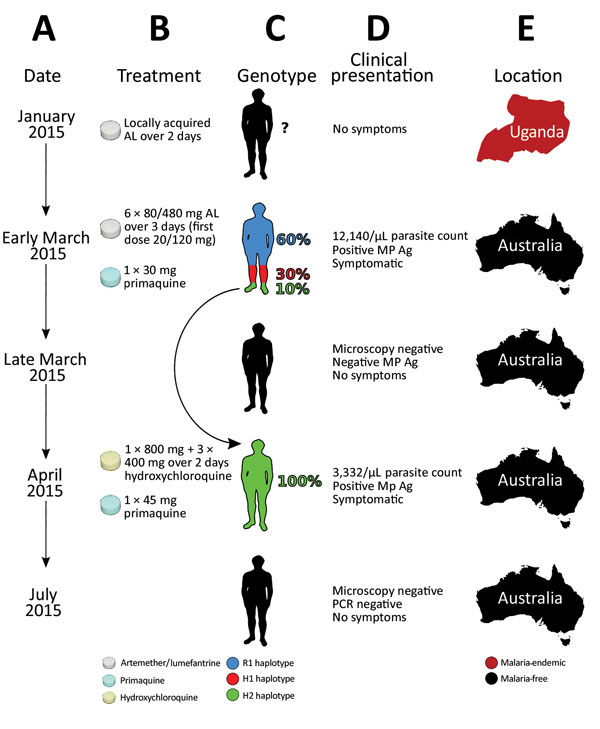Volume 23, Number 8—August 2017
Research
Genomic Characterization of Recrudescent Plasmodium malariae after Treatment with Artemether/Lumefantrine
Figure 1

Figure 1. Timeline of the clinical case of a patient with Plasmodium malariae infection diagnosed and treated at Royal Darwin Hospital, Darwin, Northern Territory, Australia, March–April 2015, showing the timing (A), treatment (B), parasite’s genotype as inferred from whole-genome sequencing (C), clinical presentation (D), and location (E). The rounded arrow indicates the recrudescence of the minor haplotype 2 in the initial infection to dominate monoclonally in the second infection. AL, artemether/lumefantrine; H1, haplotype 1; H2; haplotype 2; MP Ag, pan-malarial antigen; R1, reference haplotype.
1These authors contributed equally to this article.
Page created: July 17, 2017
Page updated: July 17, 2017
Page reviewed: July 17, 2017
The conclusions, findings, and opinions expressed by authors contributing to this journal do not necessarily reflect the official position of the U.S. Department of Health and Human Services, the Public Health Service, the Centers for Disease Control and Prevention, or the authors' affiliated institutions. Use of trade names is for identification only and does not imply endorsement by any of the groups named above.